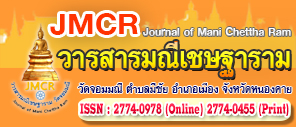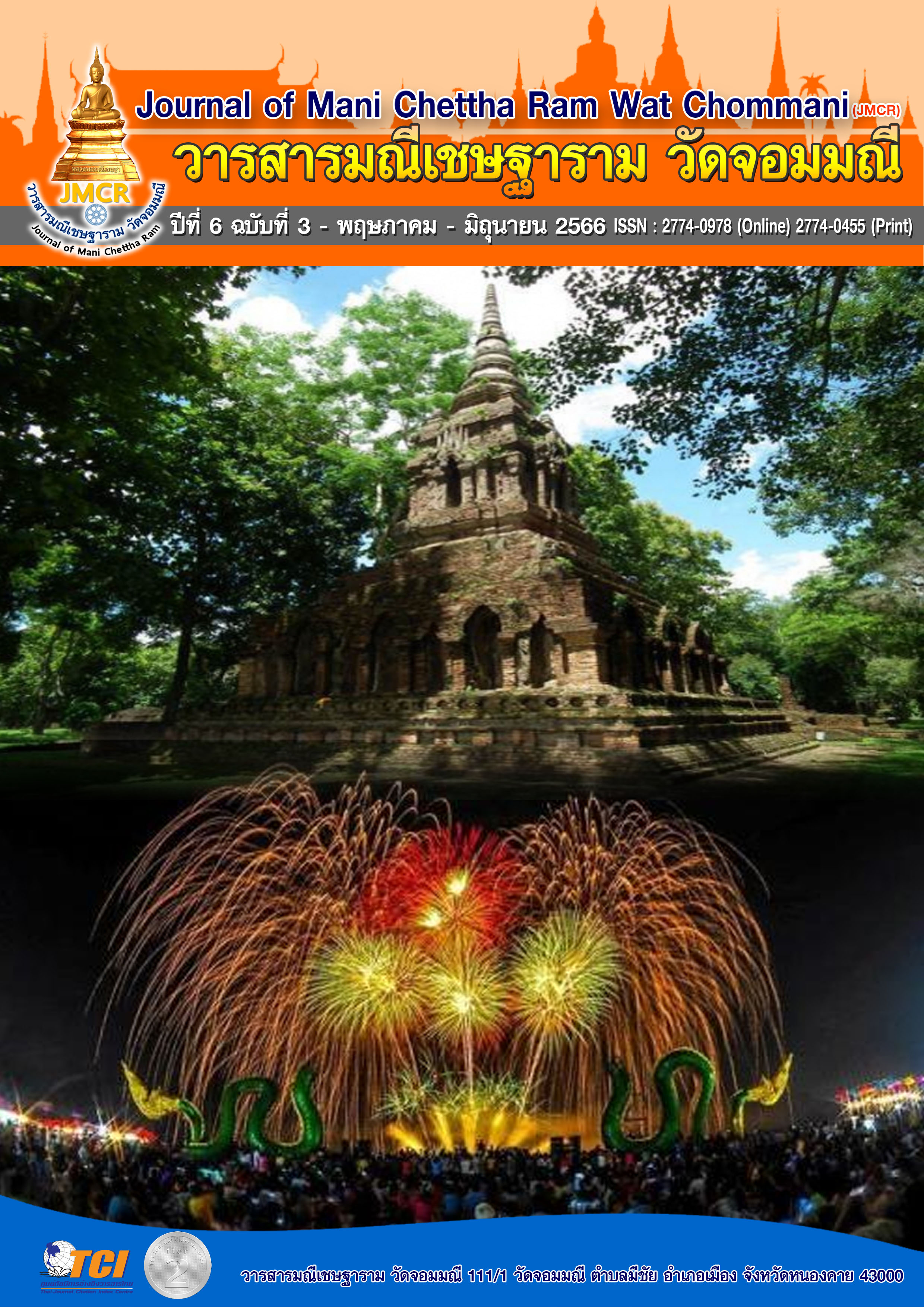CHALONG PHRA KRUA: THE HISTORY AND BENEFITS OF THE CREATION OF THE BUDDHA IMAGES
-
Keywords:
A book celebrating Phra Kruea, the history and virtue of creating a Buddha imageAbstract
This article studies the history and benefits of creating the Buddha images in the Isan region that appeared in the book “Chalong Phra Krua.” This book is the edition of the Wat Phra That Choeng Chum Worawihan, That Choeng Chum subdistrict, Mueang Sakon Nakhon district, Sakon Nakhon province. The manuscript of this book was recorded through Thammalao-Isan alphabets on a raw courtyard sheet which consisted of 16 courtyards. The manuscript mentioned the history of the first creation of Buddha images in the Buddha's time of Prasenajit or Pasenadi of Kosala, who dominated the Sravatthi city in Bihar. The benefits description of creating Buddha images from mixing 14 materials, including leaves, fabric, terracotta, sealing wax, wood, cement, bones, stone, lead, brass, silver, glass, and gold, was also mentioned. The information gathered from this documentary study reveals that the content of the Chalong Phra Krue book is similar to the book "Benefits of Building of Phra Chao," which is famous in the Lanna Kingdom. The essence of the book "Benefits of Phra Chao" begins with some contents from the legend of Phra Kaen Chan, then describes the benefits of the building of Phra Chao at the end. This book is also used to deliver a sermon for the celebration when Buddha images are built on each special occasion in the past. In addition, the Buddha images are a piece of visual art in a group of the object stupa that represents the Lord Buddha. They are built for the recollection of the Buddha, and the Isan people call it "Phra Chao" or "Hoob Phra Chao" to show their respect for the Lord Buddha. According to this study’s information, the "Chalong Phra Krua" demonstrates the essence of thoughts and beliefs about making merits that includes a piece
References
กัลยกร ลาภเดโช และสมบูรณ์ สุขสำราญ. (2565). บทบาทพระสงฆ์กับการพัฒนาสังคมไทย. วารสารมณีเชษฐาราม วัดจอมมณี, 5(1), 1-16.
กานต์ กาญจนพิมาย. (2565). การศึกษาวิเคราะห์พระพุทธรูปไม้อีสานเชิงปรัชญา. ใน ผู้ช่วยศาสตราจารย์ ดร.หอมหวล บัวระภา/บรรณาธิการ. พระไม้ลายมือ บรรพชนคนไทยอีสาน. ขอนแก่น: โรงพิมพ์มหาวิทยาลัยขอนแก่น.
คัมภีร์ใบลาน. (ม.ป.ป.). ฉลองพะเคือ ฉบับวัดพระธาตุเชิงชุมวรวิหาร ตำบลธาตุเชิงชุม อำเภอเมืองสกลนคร จังหวัดสกลนคร จำนวน 1 ผูก ประกอบด้วย 16 ลาน ต้นฉบับบันทึกด้วยอักษรธรรมลาว – อีสานบนแผ่นลานดิน เก็บรักษา ณ ห้องสมุดสกลนครศึกษา สถาบันภาษา ศิลปะและวัฒนธรรม. สกลนคร: มหาวิทยาลัยราชภัฏสกลนคร.
จังหวัดสกลนคร. (2559). พระพุทธองค์แสน สตสหัสสปฏิมานุสรณ์. เชียงใหม่ : หจก.วนิดาการพิมพ์.
ทิพวรรณ ทั่งมั่งมี. (2556). ภูมิปัญญาการสร้างพระพุทธรูปเกสรดอกไม้ในล้านนาเพื่อการสร้างสรรค์พระพุทธปฏิมาร่วมสมัย. ใน ปร.ด.ภูมิศาสตร์ลุ่มน้ำโขงและสาละวินศึกษา. มหาวิทยาลัยราชภัฏเชียงใหม่.
ธนูฤทธิ์ ดวงดี และสมเดช นามเกตุ. (2565). การพัฒนาภูมิปัญญาแห่งการเรียนรู้ด้วยพระไตรปิฎก.วารสารมณีเชษฐาราม วัดจอมมณี, 5(3), 71-85.
ธีระวัฒน์ แสนคำ. (2561). พระพุทธรูปสำคัญในจังหวัดเลย. เลย: เมืองเลยการพิมพ์.
ปฐม หงษ์สุวรรณ. (2555). ตำนานพระพุทธรูปล้านนา. มหาสารคาม: หจก.อภิชาติการพิมพ์.
พระครูสกลปัญญาธร. (11 พ.ย.65). สองพะเคือ. (พจนวราภรณ์ เขจรเนตร, สัมภาษณ์)
ราชบัณฑิตยสถาน. (2556). พจนานุกรมฉบับราชบัณฑิตยสถาน พ.ศ.2554. กรุงเทพมหานคร: สำนักพิมพ์นานมีบุคส์.
วิทยา วุฒิไธสง. (2565).ความเป็นมาของพระไม้ในภาคอีสาน. ใน ผู้ช่วยศาสตราจารย์ ดร.หอมหวล บัวระภา/บรรณาธิการ. พระไม้ลายมือ บรรพชนคนไทยอีสาน. ขอนแก่น: โรงพิมพ์ มหาวิทยาลัยขอนแก่น.
ศักดิ์ชัย สายสิงห์. (2555). เจดีย์ พระพุทธรูป ฮูปแต้ม สิม ศิลปะลาวและอีสาน. กรุงเทพมหานคร: มิวเซียมเพรส.
สิรีรัศมิ์ สิงห์สนธิ และพระมหามฆวินทร์ ปุริสุตฺตโม. (2563). พระพุทธรูป : การตีความเชิงสัญลักษณ์ทางพระพุทธศาสนา. วารสาร มจร พุทธศาสตร์ปริทรรศน์, 4(1), 88-98.
อรุณรัตน์ วิเชียรเขียว. (2558). พระพุทธรูปตามคติชาวล้านนา. กรุงเทพมหานคร:สำนักพิมพ์แห่งจุฬาลงกรณ์มหาวิทยาลัย.


